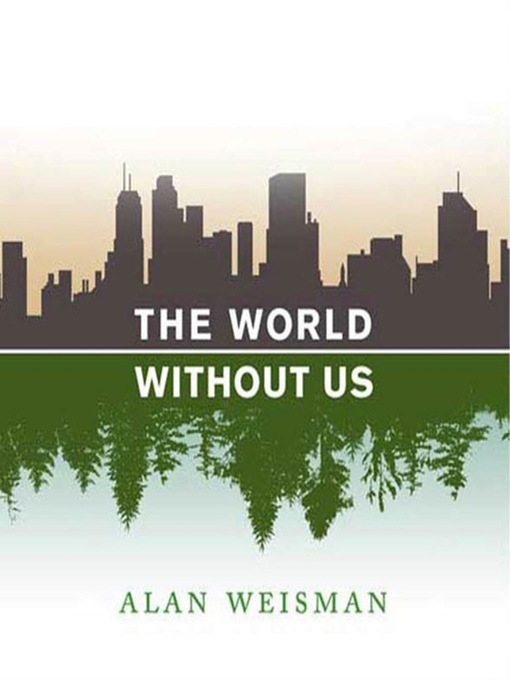Discover the impact of the human footprint in The World Without Us. Take us off the Earth and what traces of us would linger? And which would disappear? Alan Weisman writes about which objects from today would vanish without us; how our pipes, wires, and cables would be pulverized into an unusual (but mere) line of red rock; why some museums and churches might be the last human creations standing; how rats and roaches would struggle without us; and how plastic, cast-iron, and radio waves may be our most lasting gifts to the planet.
But The World Without Us is also about how parts of our world currently fare without a human presence (Chernobyl; a Polish old-growth forest, the Korean DMZ) and it looks at the human legacy on Earth, both fleeting and indelible. It's narrative nonfiction at its finest, taking an irresistible concept with gravity and a highly-readable touch.
Some examples of what would happen:
· One year: Several more billions birds will live when airplane warning lights cease blinking.
· Twenty years: The water-soaked steel columns that support the street above New York's East Side would corrode and buckle. As Lexington Avenue caves in, it becomes a river.
· 100,000 years: CO2 will be back to pre-human levels (or it might take longer).
· Forever: Our radio waves, fragmented as they may be, will still be going out.
- Available now
- New eBook additions
- Travel Guides
- Let Your Garden Grow
- New kids additions
- New teen additions
- Most popular
- Try something different
- Series Starters
- Available Now Ebooks
- Homeschool Resources
- Workbooks for K-8
- Hispanic Heritage
- See all ebooks collections
- Great Courses
- Always Available Audio Fiction
- Always Available Audio Nonfiction
- Always Available Audio Romance
- Where Have I Heard That Voice Before?
- Listening to Nature
- Pimsleur Language Learning
- Available now
- New audiobook additions
- Great Narrators
- Audiobooks for your Commute
- Listen While You Work
- New kids additions
- See all audiobooks collections

